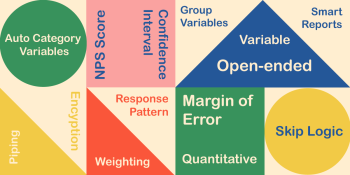Why is calculating survey response rate so important and how is it determined?
 The calculation of Response Rate (RR) is often inconsistent across research studies because each study may use its own definition. There are so many ways of calculating response rates that comparison across survey research studies can result in confusion and misinterpretations. In order to make practical comparisons across different research studies, it is important to standardize the calculation of response rate.
The calculation of Response Rate (RR) is often inconsistent across research studies because each study may use its own definition. There are so many ways of calculating response rates that comparison across survey research studies can result in confusion and misinterpretations. In order to make practical comparisons across different research studies, it is important to standardize the calculation of response rate.
Consider adopting the calculations as defined by the Standard Definitions: Final Dispositions of Case Codes and of Outcome Rates for Surveys (American Association for Public Opinion Research, Revised 2011) and the various other response calculations, as shown below. Abbreviated terms include: I = Complete survey, P = Partial survey, R = Refusal and break-off, NC = Non-contact, O = Other, UH = Unknown if household/occupied housing unit, UO = Unknown, other, e = Estimated proportion of cases of unknown eligibility that are eligible.
Response Rates
Response Rate 1 (RR1) (Minimum Response Rate): The number of complete interviews divided by the number of interviews (complete plus partial) plus the number of non-interviews (refusal and break-off plus non-contacts plus others) plus all cases of unknown eligibility.

Response Rate 2 (RR2): Counts partial interviews as respondents.

Response Rate 3 (RR3): Estimates what portion of cases of unknown eligibility is actually eligible.

Response Rate 4 (RR4): Allocates cases of unknown eligibility as in RR3, but also includes partial interviews as respondents as in RR2.

Response Rate 5 (RR5): Either a special case of RR3 in that it assumes that e=0 or the rare case in which there are no cases of unknown eligibility.

Response Rate 6 (RR6): Represents the maximum response rate.

View the Standard Definitions: Final Dispositions of Case Codes and of Outcome Rates for Surveys (American Association for Public Opinion Research, Revised 2011) for more detailed information on calculating the above response rates, and to also calculate:
- Cooperation Rate: Measures the proportion of all cases interviewed of all eligible units ever contacted.
- Refusal Rate: Measures the proportion of all cases in which a respondent refuses to do an interview, or breaks-off an interview.
- Contact Rate: Measures the proportion of all cases in which some responsible member was reached by the survey.



